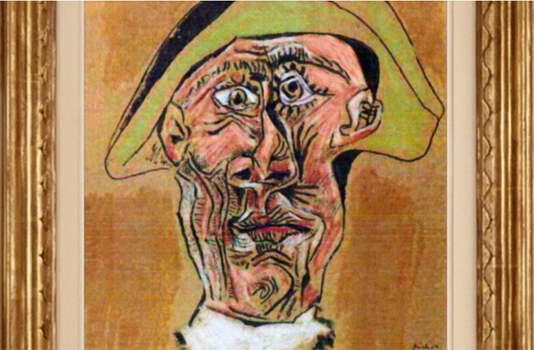THE HAGUE, Nov 19, 2018 (BSS/AFP) – A writer who thought she had found a
painting by Pablo Picasso stolen in an infamous art heist six years ago said
Sunday she was the victim of a “publicity stunt”, Dutch media reported.
Picasso’s “Harlequin Head” was one of seven celebrated paintings snatched
from the Kunsthal museum in Rotterdam in 2012 during a daring robbery local
media dubbed “the theft of the century”.
The artworks by Picasso, Monet, Gauguin, Matisse and Lucian Freud have not
been seen since.
But Dutch writer Mira Feticu, who wrote a novel based on the brazen heist,
thought she had uncovered the piece after she was sent an anonymous letter
around 10 days ago “with instructions regarding the place where the painting
was hidden” in Romania.
Feticu, of Romanian origin, told AFP the tip-off led her to a forest in
the east of the country where she dug up an artwork wrapped in plastic.
Romanian authorities, who were handed the canvas on Saturday night, said
that it “might be” Picasso’s painting, which is estimated to be worth 800,000
euros ($915,000).
However, on Sunday night Feticu told the Dutch public broadcaster NOS that
she was the victim of a “performance” by two Belgian directors in Antwerp.
Feticu said she received an email from the Belgian duo explaining that the
letter was part of a project called “True Copy”, dedicated to the notorious
Dutch forger Geert Jan Jansen, whose fakes flooded the art collections of
Europe and beyond until he was caught in 1994.
“Part of this performance was prepared in silence in the course of the
past few months, with a view to bringing back Picasso’s ‘Tete d’Arlequin’,”
Bart Baele and Yves Degryse wrote on their website.
Their production company “currently wishes to abstain from any comment”
because it first wants to speak to Feticu, the statement said.
“We will be back with more details on this issue within the next few
days.”
– ‘Theft of the century’ –
Four Romanians were jailed in 2014 for the heist and ordered to pay 18
million euros ($20.5 million at today’s rates) to the work’s insurers.
One of the group, Olga Dogaru, told investigators she had burned the
paintings in her stove in the sleepy village of Carcaliu to protect her son,
Radu, when he could not sell them. She later retracted the statement.
Investigators have previously said the paintings were destroyed after the
thieves failed to find a buyer.
Specialists from Romania’s museum of natural history examined ashes from a
stove in Dogaru’s home and found traces of at least three oil paintings,
based on lead- and zinc-based pigments in blue, yellow, red and green that
are no longer used, director Ernest Oberlaender-Tarnoveanu said.
The thieves had slipped into the Dutch museum during the night of October
15-16, 2012 and got away with the works which despite their value were not
protected by alarms.



